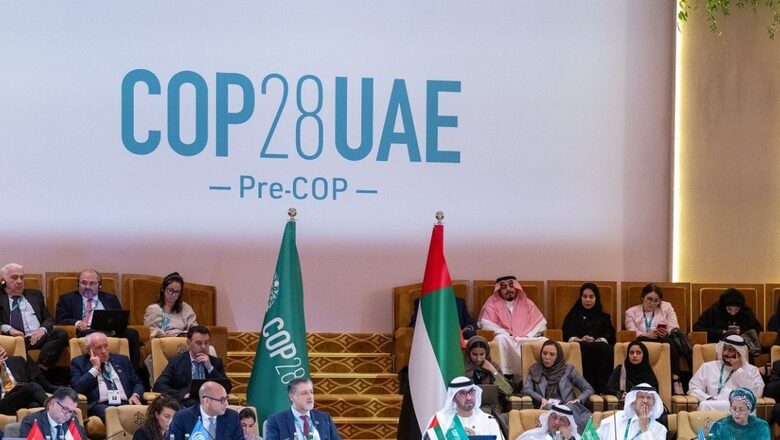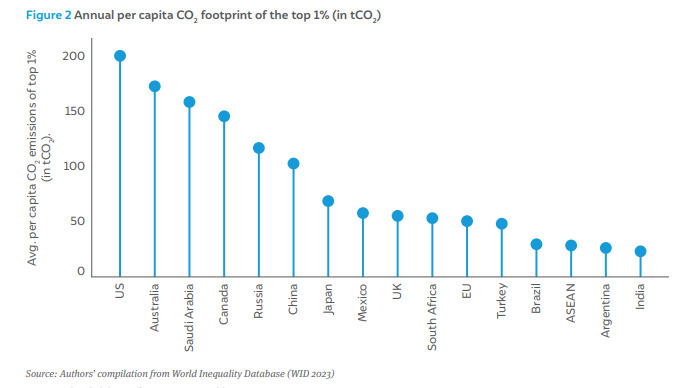
views
With the biggest annual climate change conference, COP28, set to begin in the UAE this week, a new study has put the focus back on climate justice highlighting the stark emission divide between the developed and developing countries in contributing to climate change.
The independent study led by New Delhi-based Council on Energy, Environment and Water (CEEW) documents how the carbon dioxide (CO2) emissions of an average earner in many developed countries like the US, Saudi Arabia or Australia are far more than the emissions of the richest 10% in developing countries such as Argentina, Brazil, India and the ASEAN region. The disparities are so pronounced that even the emissions of an individual in the bottom 10% income bracket in rich nations are 6 to 15 times more than an individual in the poorest decile of India, Brazil or the ASEAN region.
The assessment again calls attention to the foundational principles of ‘common but differentiated responsibilities (CBDR)-RC’ that India continues to emphasize at all summits. The upcoming COP28 is also expected to hold up a mirror to past pledges and broken promises with the first-ever Global Stocktake (GST). Experts from the Global South have continued to point out the glaring inequities in historical emissions. With a limited carbon budget, it becomes necessary for rich nations to vacate carbon space for developing countries. This assumes significance at a time when the world leaders are set to negotiate on operationalising the much-awaited ‘Loss and Damage’ to help vulnerable countries facing severe impacts of climate change, despite contributing the least.

“The study clearly shows that not everyone is equally responsible for increasing global carbon emissions. This, once again, drives home the scientific basis for ‘common but differentiated responsibilities’. The findings make the need for accountability and long-term climate finance both imperative and immediate. We can no longer argue why emerging economies need carbon space, or cheap and convenient finance to power their sustainable futures,” said Arunabha Ghosh, CEO, CEEW. India has consistently emphasised that all countries should have equitable access to the global carbon budget, a finite global resource, for keeping temperature increase within the limits set by the 2015 Paris Agreement and all countries must stay within their fair share of this global carbon budget while using it responsibly.
The experts also call for carbon tax on the richest 10% of developed countries and China, which could shore up USD 500 billion and discourage highly carbon-intensive consumption patterns. These funds could be used for climate change mitigation, research and development, de-risking clean technology, and building resilience. “Inequity in the climate debate has a long-standing history and the rich in developed countries are primarily responsible for carbon emissions. Our study shows while the emission intensity of income has reduced for the highest earners (top 10%) in most countries between 2008 and 2018, overall emissions are increasing because of the rise in incomes. With the carbon budget depleting to keep the world below the 2°C threshold, the rich must be held accountable and nudged to pursue sustainable lifestyles,” said Pallavi Das, Programme Lead, CEEW.
A great emission divide also exists within the nations where there are significant inequities between the wealthiest and poorest income brackets. The difference in the carbon footprint between the top and bottom income 10% ranges between 8 and 22 times for the countries studied. This makes it clear that high earners must make concerted efforts to adopt low-carbon lifestyles and practice responsible consumption, said the team. According to the study, adoption of low-carbon lifestyles by the richest on the likes of India’s Mission LiFE can also lead to significant emission reductions. If the richest 10 percent of developed countries and China reduce their carbon footprint even by half, they can save more than 3.4 billion tonnes of CO2 annually, it stated.
The analysis relies on the per capita CO2 emissions data for various income groups from the World Inequity Database and income deciles from the World Bank. The ‘developed countries and China’ for the study include, Australia, Canada, China, European Union, Japan, Russian Federation, Saudi Arabia, Turkey, the United Kingdom, and the United States, while the ‘developing countries (or regions)’ include Argentina, Brazil, India, Mexico, South Africa, and ASEAN.
















Comments
0 comment